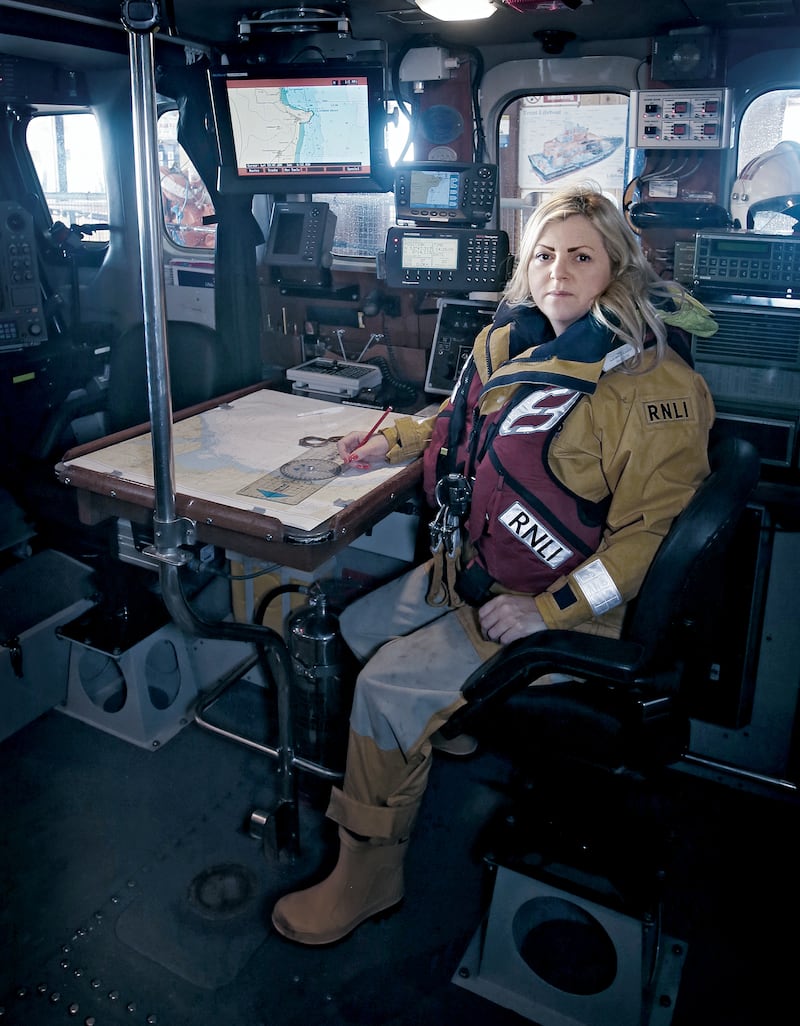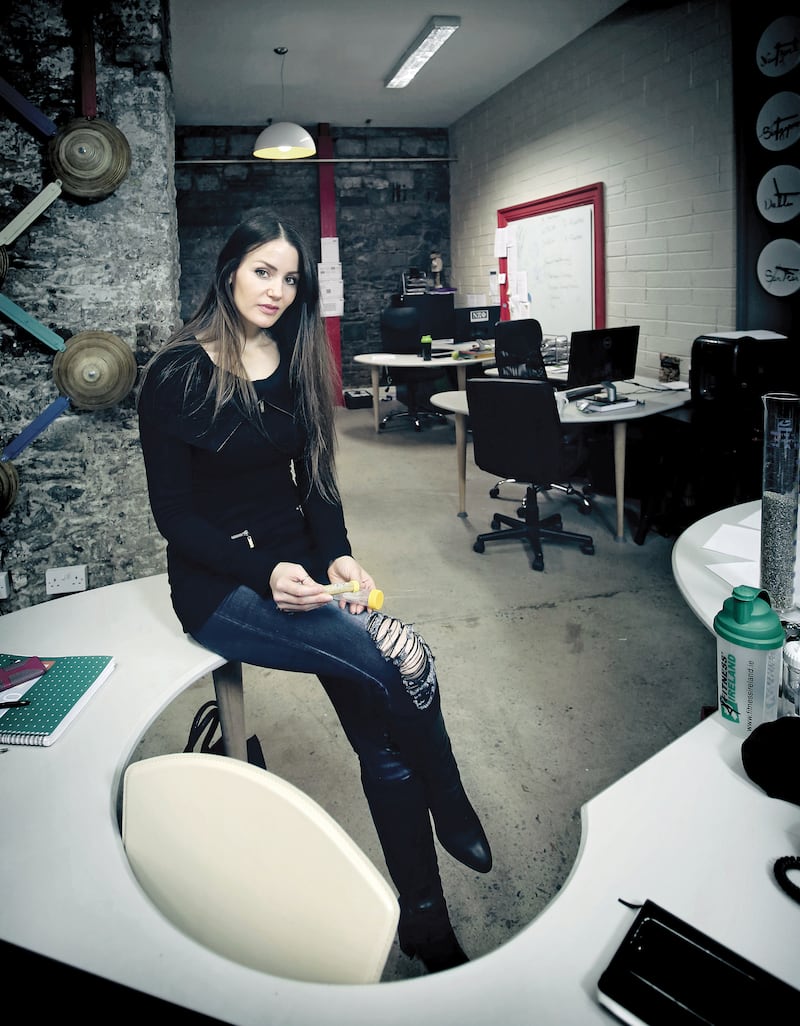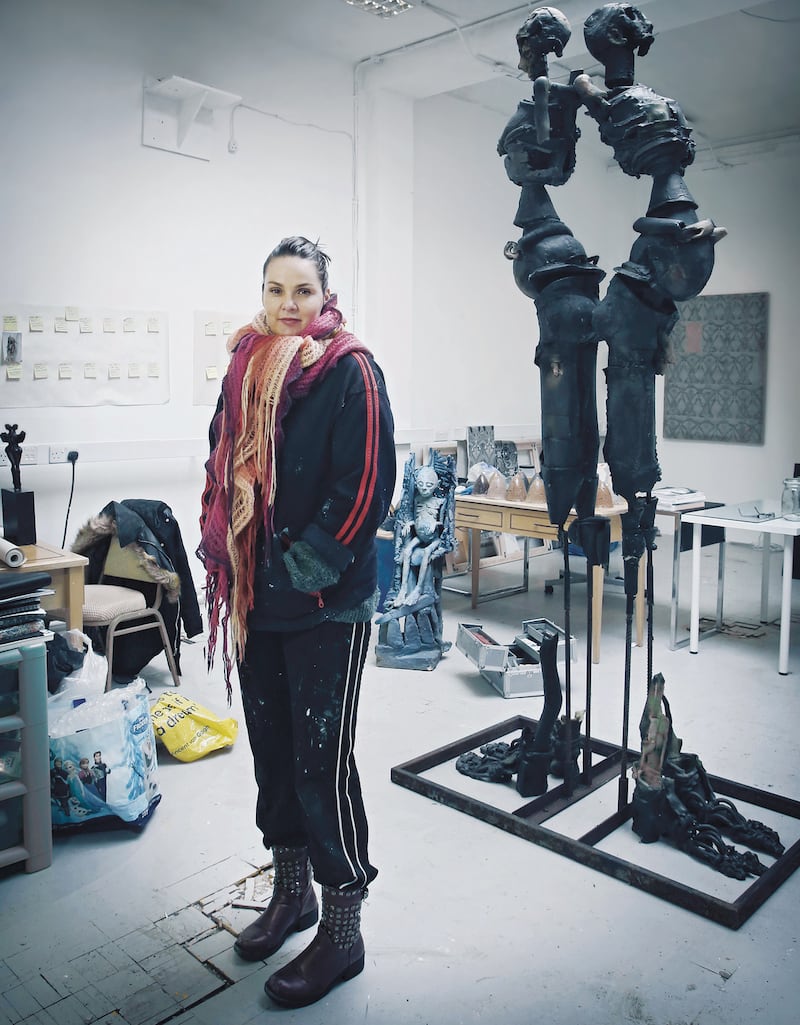When Stephanie Roche came close to becoming the first woman ever to win the Fifa Puskás Award for best goal of the year in 2014, people she didn't know would approach her on the street to congratulate her and to tell her that she didn't look like a footballer.
Four years on, she is still bewildered by it.
“I didn’t know how to react to that. How did they expect me to be? Was it supposed to be a compliment?
“I think a lot of people have this image of a woman footballer who is butch and doesn’t look after herself and that’s just not right. There are lots of ‘girlie’ girls who have a talent for football,” she says.
A photograph of Roche togged out in her Ireland kit on a football pitch will form part of the 'What's She Doing Here?' exhibition at the Little Museum of Dublin later this month, celebrating women with unusual careers or ones traditionally associated with men.
The pictures were taken by photographer Beta Bajgart for her book A Woman's Work, published for International Women's Day 2017. She began collecting the photographs three years ago, when a friend in the Czech Republic asked her to take part in his exhibition called "Women and Beauty".
“For me real beauty has always had very little to do with the way we look or dress, so the challenge was to find an answer to the question: who really was that ‘beautiful’ woman I saw through the lens of my camera?” says Bajgart.
She started to photograph her female friends, then made a list of professions and sought out women working in them.
“I tried to capture not only that they were beautiful, but also the fact that they were passionate about their work and proud to present what they do, and a story started to emerge,” she says.

Lisa Levins-Burgess was photographed by Bajgart at the RNLI lifeboat station at Clogherhead in Co Louth where she is a navigator and training co-ordinator. She grew up in the village and, 23 years ago this summer, became the first woman in its history to join the lifeboat's crew.
“I’d say the lads were looking at this woman coming in and probably thought in their heads, ‘she won’t last’,” she laughs.
It was daunting going into the job and showing the men that she was their equal and that she was up to the job, but Levins-Burgess approached it fearlessly.
“My philosophy has always been, if the lads can do it, I can do it. That’s probably how I’ve adapted. I haven’t let anything stop me, because there’s no point in being on the crew if you don’t do what the lads do,” she says.
One thing you won’t see her doing, though, is putting on the kettle.
“As a rule of thumb, for the last 22½ years on the crew I’ve never made the tea or coffee,” she laughs.
Celebrating difference
For Nora Khaldi, a mathematician and the founder of the Irish food technology start-up Nuritas, it has been less about fitting in and more about celebrating difference.
“I grew up with an Irish mum who taught me that being different is good,” she says.

Khaldi, photographed by Bajgart at her desk, encountered few women on her journey to success, but she has always heeded her mother’s advice, embracing her difference and figuring out what she could achieve with it.
“I have always followed that rule and, as such, I have never felt like a minority. Yes, there were very few women throughout my career in mathematics, computer science, or as an entrepreneur, but I have always chosen to focus on my work and its quality rather than my sex,” she says.
Fair City actor Úna Kavanagh also features in the exhibition, but not for her role on the soap opera. Long before she starred on the streets of Carrigstown, Kavanagh studied at the National College of Art and Design in Dublin and has produced work across many disciplines, in particular sculpture.
“When you say sculptor, you wouldn’t know whether that’s male or female. There’s no ‘ess’ to feminise it,” says Kavanagh. But she admits that even she “would think of it as masculine, when you’re learning things like welding.”
While at NCAD Kavanagh created ambitious pieces which required scaffolding as high as the studio ceiling. However when she finished her degree, as a young single mother, studio space and the materials required to create such expansive art became unaffordable.
She felt the weight of expectation about what it was that she should or should not be doing to provide for her daughter, so she taught and did other jobs to keep money coming in. Undeterred by what she calls the “shoulds and shouldn’ts”, however, she also found that she could still create art, just on a smaller scale.
“I found that with my work, that it had to shrink physically . . . The kitchen table became central. What can I make? Can I still try and create as an artist within the domestic? A lot of women, I think, do that,” she says.

Bajgart says that many of the women she photographed had interesting life and career stories. Some of them told her that they had to work twice as hard as their male counterparts to get where they were, and others were facing difficulties in their careers.
“That is why I think the collection goes beyond capturing women working in a certain profession. For me, it became a collection of role models,” she says.
Play for Ireland
Stephanie Roche always knew that she wanted to play for Ireland one day, but it took seeing her hero Olivia O'Toole playing for Ireland against Switzerland at Richmond Park in 2006 to convince her that she could do it.
“I thought, I want to be like her. I want to do that and I want to play for this team. It was almost like I’d seen it so I knew what it was that I had to reach for. That’s why I think it’s so important that young girls have someone they can look up to,” she says.
“What Beta is doing with her photographs is saying, ‘look at all the things that you can be,’” says Úna Kavanagh.
That is what we should teach girls, she says, rather than advising them about what they should or should not do with their lives.
“Sometimes people will try to give you advice because they think it’s the best thing for you, but your own instinct is very powerful when telling you that something’s not right.”
When Bajgart visited Clogherhead to photograph Lisa Levins-Burgess two years ago, she was off the lifeboat because she was pregnant. Her husband Steve Burgess had also died a short time before. He knew that saving lives is her passion and was always supportive of her dedication to the job. She cannot bear to think of retirement.
“I think they’re going to have to drag me out kicking and screaming,” she says.
“If I can inspire any young person to follow their dreams and follow their heart to do what they want to do, regardless of whether it’s a male-dominated environment or not, to show them they can do it. Look at me, I’ve done it.”
The “What’s She Doing Here?” exhibition runs at the Little Museum of Dublin from March 31st until June 10th

















